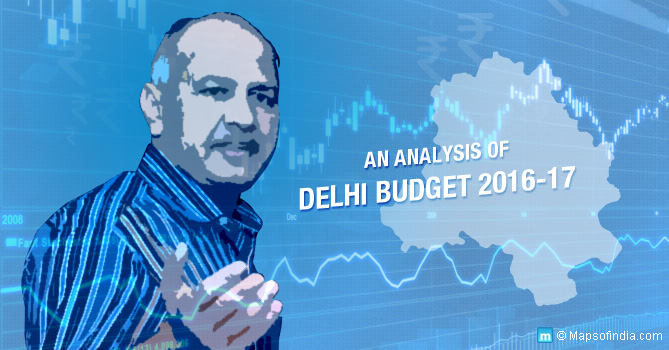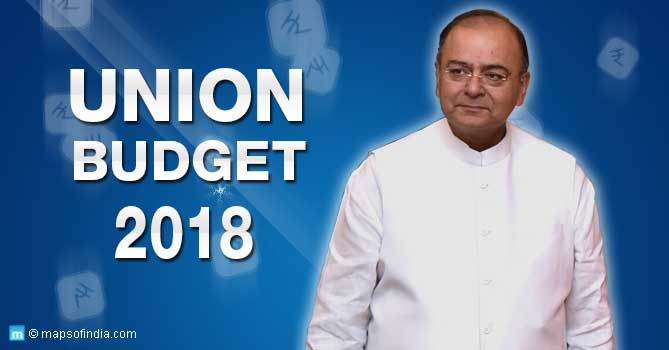On Monday, Delhi’s Deputy CM Manish Sisodia announced the 2016-17 budget at the assembly. This is AAP’s second budget. He started his budget speech by saying that the party’s manifesto and election promises are sacrosanct. In keeping with this sentiment, the budget allocated about 58.4 percent of its total outlay on the four main focus areas – education (23 percent), healthcare (16 percent), roads (11 percent) and public transport (8.4 percent). A closer look at the INR 46,600 crore budget, however, does leave room for some question.
Emphasis on Education
One of the key highlights of the 2016-17 budget presented by the Delhi government is the emphasis that has been laid on education. About 23 percent of the outlay is towards development of school and college infrastructure and educational facilities. Sisodia said that about 21 schools and 8000 classrooms were constructed in FY 2015-16. Plans are afoot to run these in dual shifts to increase classroom capacity. This is probably the most commendable part of AAP’s budget.
Despite the general welcome this focus on education has received, here are some nagging questions that continue to haunt us. Why did the government allocate INR 100 crore on CCTVs? Surely, these funds would have been better utilized in adult literacy programmes, given Delhi’s high migrant population? Would the 100 smart career colleges promised by the government not work better if developed on a partnership model with corporations? The budgetary allocation for recruitment of teachers seems hardly proportionate to the plans for increase in classroom capacity. Critics also feel that budgeting for about two third of the government’s spends on education undermines a number of other key areas that require funds and attention.
Is Mimicking Amma Canteens a Good Idea?
Populist schemes have been the trend in Tamil Nadu for decades now. Amma Unavagams (Canteens) is probably the best-loved among these. What better than hygienic and quality food that can be afforded by the poorest of the poor? A scheme well replicated by the AAP government that announced the launch of the Aam Aadmi Canteen in the budget, many claim. What the government seems to have overlooked, though, is the fact that the Amma Canteens have run many municipal corporations in Tamil Nadu huge losses (about 86 paise to every Rupee earned). Is the Delhi government ready for such a financial deal? If it is INR 10 crore seems hardly enough to see these canteens through the year (given Delhi’s population).
Pollution Focus Lost
Deputy CM Sisodia started off his budget speech on Monday by thanking his colleagues and the people of Delhi in making the odd-even scheme a great success. Considering the importance he gave to the issue, the budget lacked any concentrated effort to address the out-of-control pollution situation in Delhi. The government has allocated INR 100 crore for vacuum cleaners and promised to increase the number of air quality monitoring centres. Those with expectations of finding Delhi a greener, cleaner place to live in were disappointed by the budget. Pollution is one of Delhi’s greatest concerns at the moment. In such a scenario, one is left with the definite impression that the government should have channelised funds and resources towards combating pollution.
VAT Reduction Sustainable?
At first glance, the Delhi government’s decision to reduce the VAT and luxury tax on a number of commodities and services seems heartening. This change was announced just a couple of days after news reports said that Delhi’s growth in VAT collection for the current FY is well over 11 percent. This means over INR 20,000 crore VAT has been collected by the government – funds that are meant to fuel the growth and development of the city. While on the one hand an 11 percent growth in collections is certainly a huge success on the part of the government, one also starts to wonder if any such growth will be recorded in 2016-17 given the slashed VAT rates, at least on some products. Is such a reduction in VAT sustainable?
What emerges is a total lack of clarity about the intentions and direction the AAP government is taking. According to some news reports, Assembly opposition leader Virender Gupta alleged that AAP had (on the basis of its numbers) passed the Delhi Value Added Tax Amendment Act-2 in the Assembly’s budget session last year. This act increased the maximum limit of VAT from 20 percent to 30 percent. Now, why would the AAP seek such an increase only to slash VAT rates on some commodities? Is it likely that we may see a subsequent or interim increase in VAT on other commodities? Whatever the reason, AAP needs to get its communication channels working and remain transparent with the masses that voted for it.
Cabinet Reshuffle
Earlier in March 2016, some news reports suggested that CM Arvind Kejriwal might initiate a cabinet reshuffle following the announcement of the budget. Initiating a major change in the cabinet soon after a major direction setting exercise such as the budget may not be a great idea. While it is imperative that any member’s presence in the Cabinet be judged strictly by performance indicators, it looks likely that Delhi’s Social Welfare Minister Sandeep Kumar may continue despite differences with the CM (being touted as the Dalit face of the government). One other change that may be largely welcomed, though, is if the CM himself takes up one or more portfolios. As of now, apart from Deputy CM Sisodia, Gopal Rai and Satyendra Jain hold the most number of portfolios.
Implementing the Ideals
This discussion about the cabinet brings us to the most important part of the Delhi budget – its implementation. The focal areas of the 2016-17 Budget, as presented by Deputy CM Manish Sisodia for the AAP government, seem well grounded. The plans (despite the critique) are robust and are capable of bringing about a lot of good to the people of the national capital. The key, however, remains in judicious and committed implementation. The incumbent AAP needs to remain wary of falling into a reactionary mode and being held hostage by various groups and even the media, thus taking the focus away from these areas that need attention and development.





